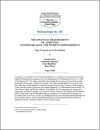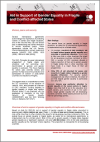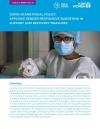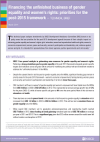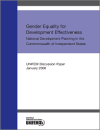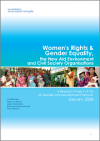FOUND 30
The paper provides a comprehensive overview and guide to complex issue of linkages between aid and gender equality.
The present study is a contribution to mark the 10th anniversary of the adoption of UNSCR 1325, and provides an overview of DAC members' funding targeted to gender equality in fragile and conflict-affected states.
Since the start of the COVID-19 pandemic, almost USD 16 trillion has been pumped into the global economy, and governments are now rolling out second and third ph
Recent reforms of aid delivery, most notably the Paris Declaration on Aid Effectiveness (2005), have provided new opportunities and mechanisms to translate donor and government commitments into improved practice results and impacts.
This note provides an overview of existing gender equality markers and reviews issues relating to the tracking and monitoring of investments related to gender equality and women’s empowerment.
This technical paper analyses investments by OECD Development Assistance Committee (DAC) donors in six policy areas that are priorities for the post-2015 development agenda because of their catalytic impact on achieving gender equality and women’s rights: girls’ education; sexual and reproductive he
The paper examins the relevance of GRB to ensure that gender equality remains at the center of the Aid Effectiveness agenda.
The guidance note sets out commom principles and standards for gender equality markers systems that track and report on allocations and expenditures for gender equality and women's empowerment.
The report "Gender Equality, the new aid environment and CSOs" was researched and written by the Gender & Development Network (GADN) because of a growing concern about the fast changing aid structures, such as direct budget support, pooled funding schemes for supporting civil society and other f
The Paris Declaration on Aid Effectiveness (PD) commits donors and partner countries to reform aid management and delivery in order to strengthen its development outcomes.
